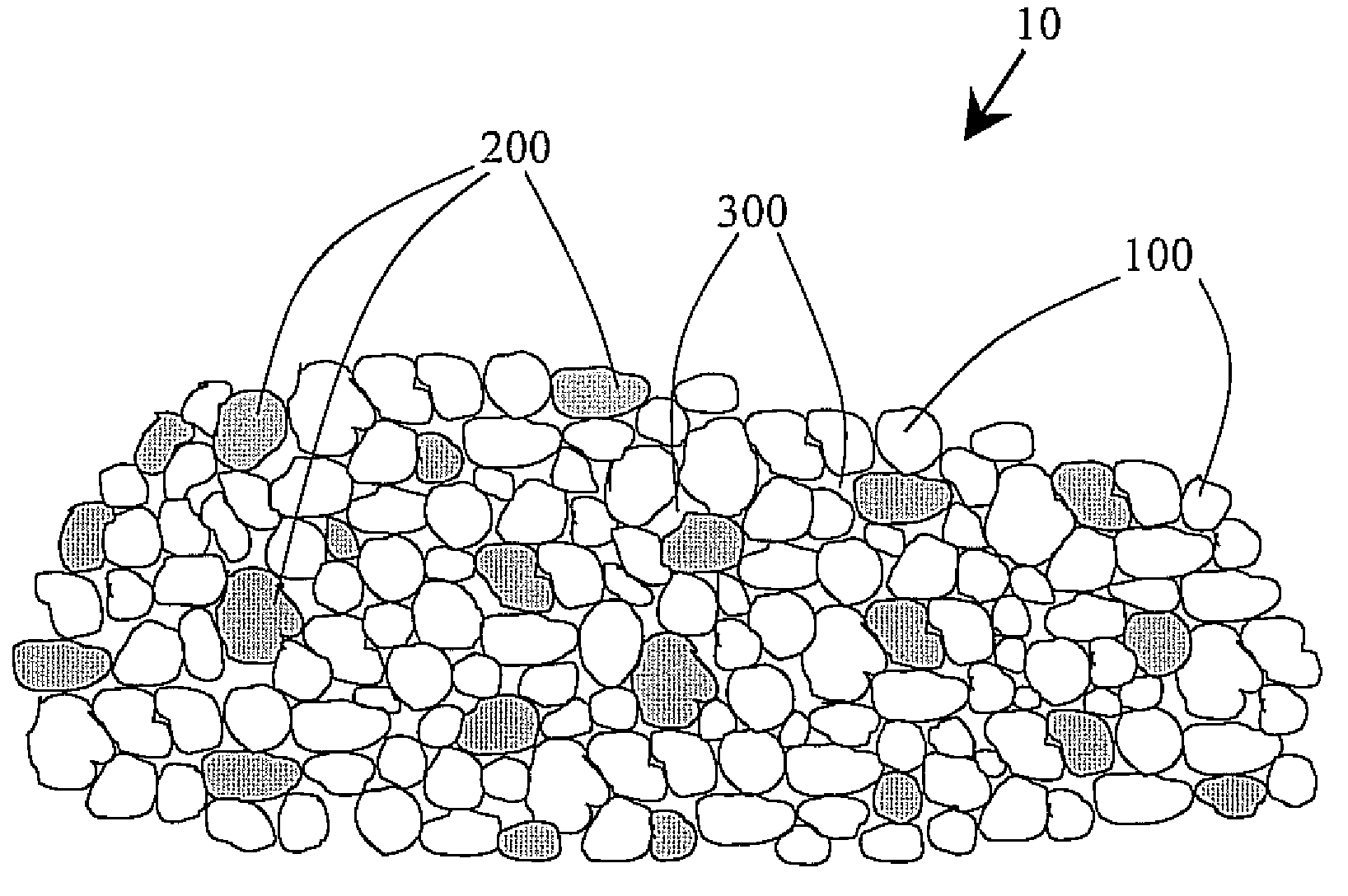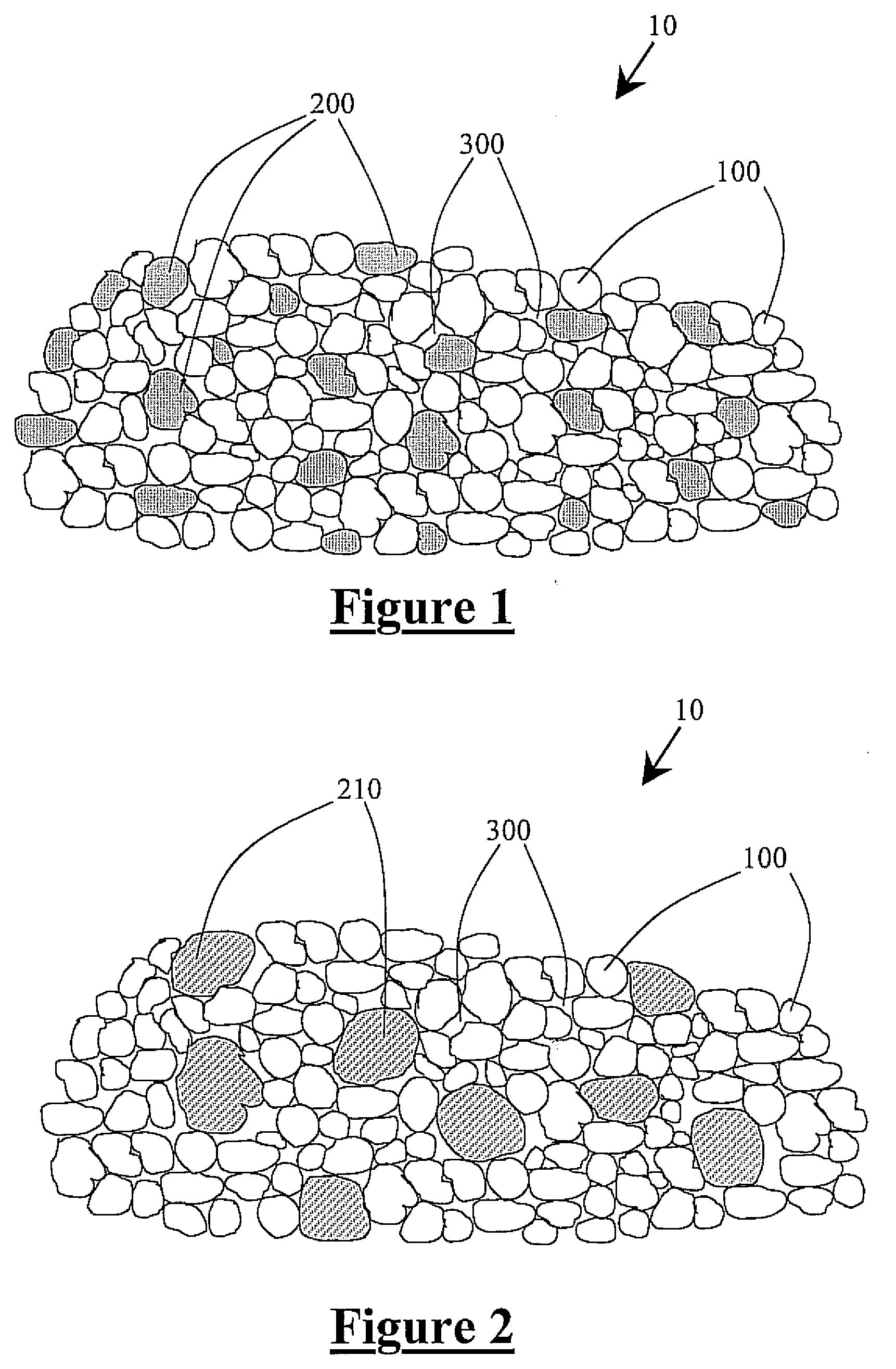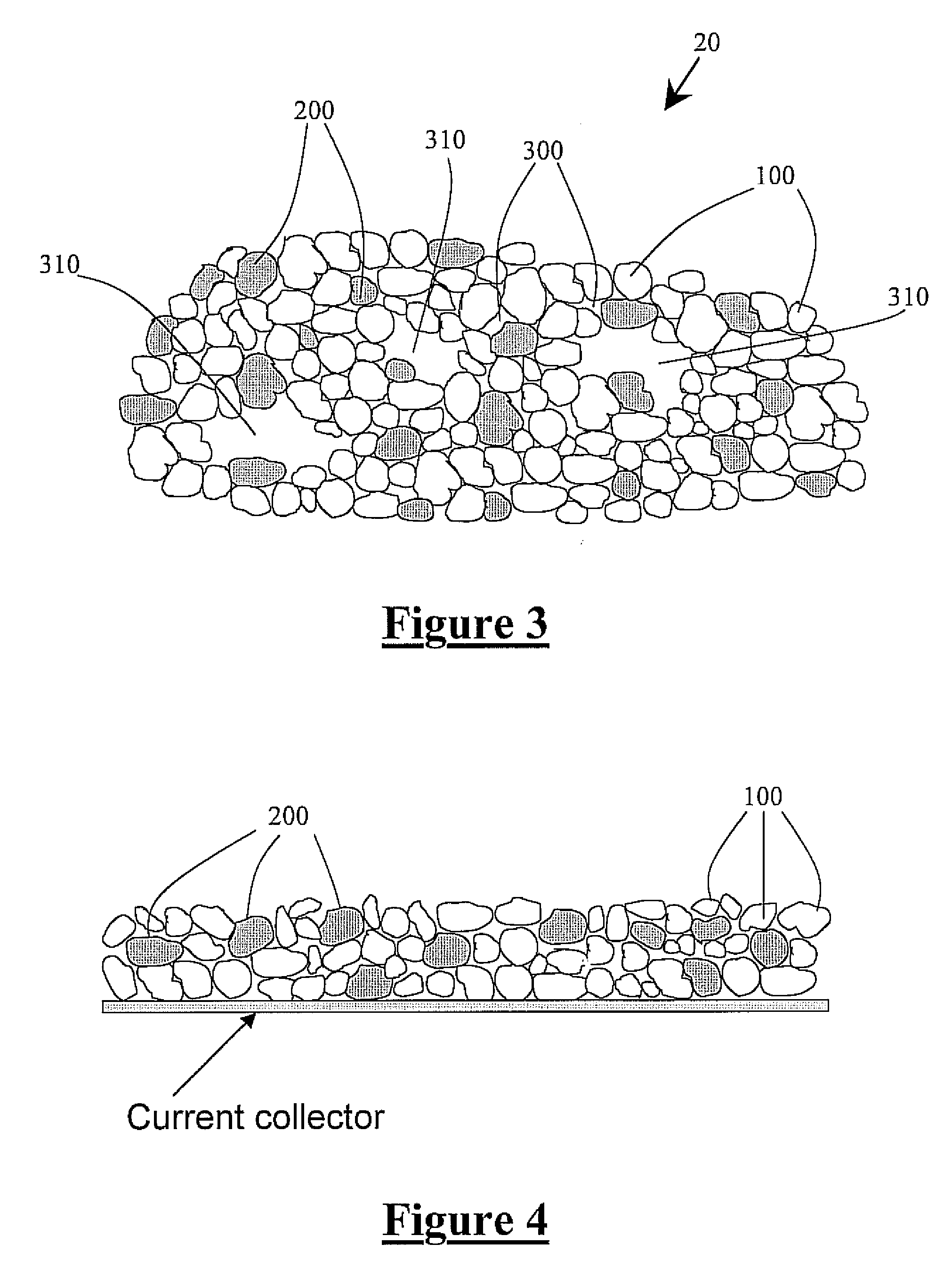Tin in an active support matrix
a technology of active support and matrix, which is applied in the direction of active material electrodes, non-aqueous electrolyte accumulator electrodes, cell components, etc., can solve the problems of battery specifications that cannot be met using traditional lithium-ion battery chemistries, battery energy requirements are continually increasing, and the volume and mass constraints remain presen
- Summary
- Abstract
- Description
- Claims
- Application Information
AI Technical Summary
Benefits of technology
Problems solved by technology
Method used
Image
Examples
example 1
[0031]High surface area cobalt oxide (Co3O4) nanoparticles were produced by decomposing cobalt carbonate at 800° C. for 8 hours. The Co3O4 nanoparticles were then placed in a solution of ethanol containing SnCl2, resulting in the absorption of Sn2+ ions on the surface of the Co3O4 nanoparticles. A low temperature reduction of the Sn2+ ions followed by filtering and rinsing produced a mixture of Sn and Co3O4 nanoparticles.
[0032]The anode capacity of an electrode formed from a homogenous mixture of the Sn and Co3O4 nanoparticles was compared to an electrode made from Sn nanoparticles only. FIG. 5 shows a plot of the anode capacity for the Sn nanoparticles anode. As shown in this figure, the capacity of the material is reduced to 200 mAh / g of anode material after approximately 30 cycles. In contrast, FIG. 6 shows a plot of the anode capacity for the Sn and Co3O4 nanoparticles anode wherein after 30 cycles the anode capacity is still above 400 mAh / g of anode material. Thus a factor of t...
PUM
| Property | Measurement | Unit |
|---|---|---|
| porosity | aaaaa | aaaaa |
| porosity | aaaaa | aaaaa |
| porosity | aaaaa | aaaaa |
Abstract
Description
Claims
Application Information
 Login to View More
Login to View More - R&D
- Intellectual Property
- Life Sciences
- Materials
- Tech Scout
- Unparalleled Data Quality
- Higher Quality Content
- 60% Fewer Hallucinations
Browse by: Latest US Patents, China's latest patents, Technical Efficacy Thesaurus, Application Domain, Technology Topic, Popular Technical Reports.
© 2025 PatSnap. All rights reserved.Legal|Privacy policy|Modern Slavery Act Transparency Statement|Sitemap|About US| Contact US: help@patsnap.com



